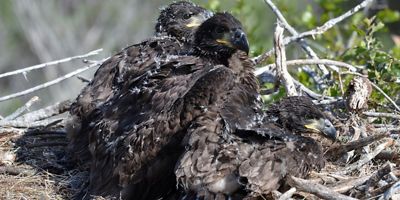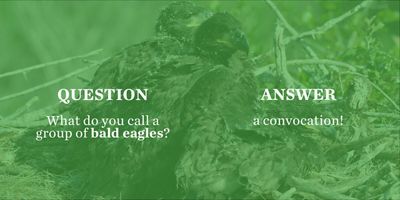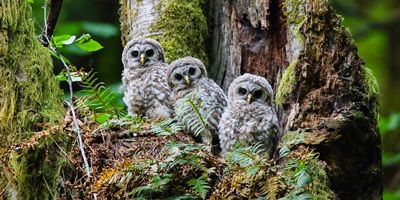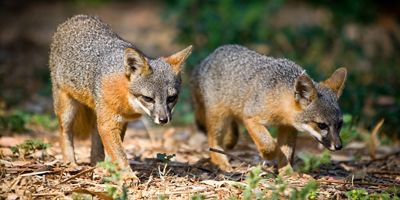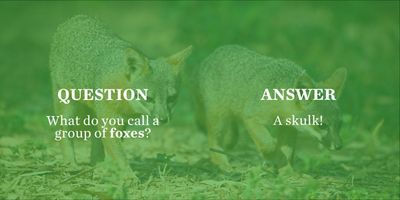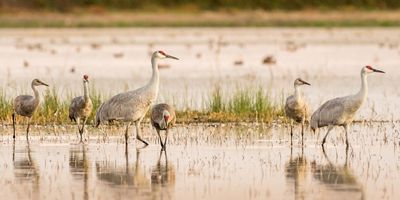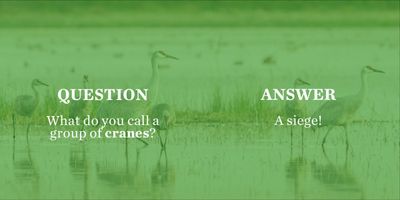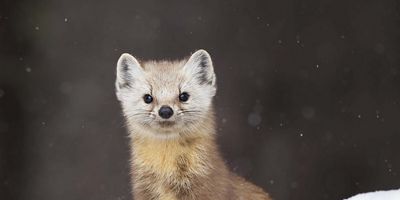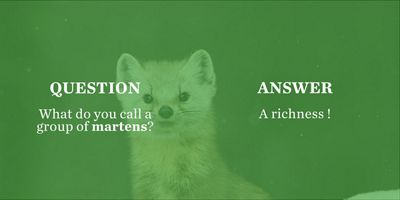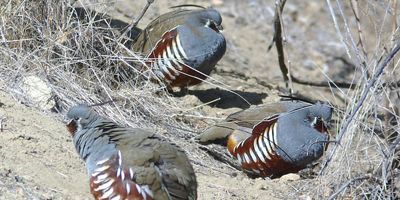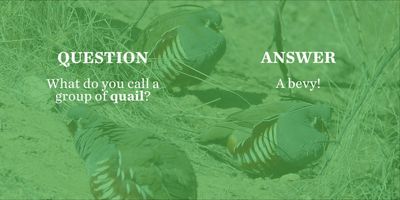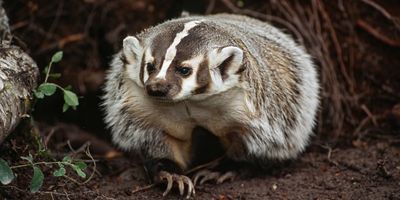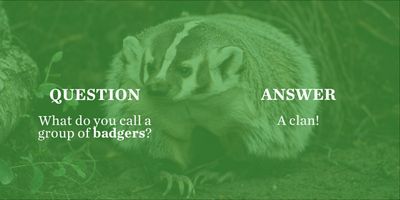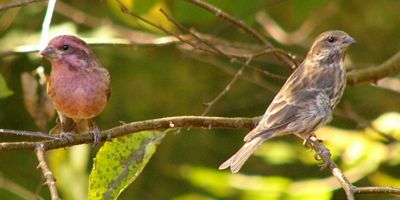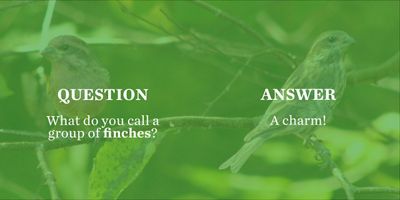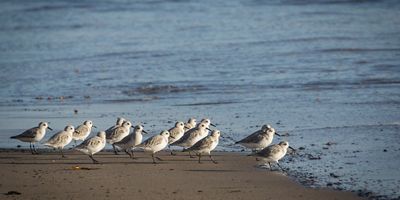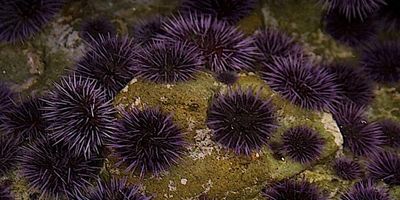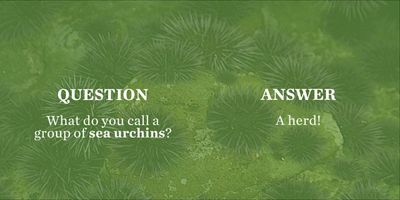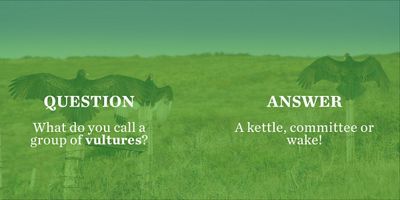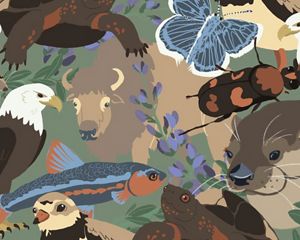QUIZ: You Know A Murder of Crows, but What About Sea Urchins?
Test yourself on collective nouns for the animals we protect.
Santa Cruz Island is now home to a thriving population of bald eagles. Decades of DDT use contaminated the fish that eagles relied on for food. The chemical weakened their eggshells, making it impossible for these majestic birds to hatch in their native home. Now, 40 years after TNC founded Santa Cruz Island Preserve, you can see a convocation of bald eagles nesting successfully thanks to an effective breeding program.
We’ve done a lot of work on the North Coast to protect California spotted owls. This endangered species depends on old-growth trees like redwoods, so their survival is closely linked to the health of the forest. Spotted owls nest in hollows or holes that occur in trees naturally, but the trees need to be old enough to form the right kind of nesting area. So, next time you find yourself in a redwood grove, look up! You might just find a parliament of owls.
Starting in 2002, TNC ran an ambitious program to bring the Santa Cruz Island fox back from the brink of extinction. These curious foxes are the size of a cat. In 2004 there were fewer than 100 individuals left. Now a skulk of nearly 3,000 foxes live wild on the island. They’ve made the fastest recovery of any mammal under the Endangered Species Act.
Our BirdReturns program provides wetland habitat for migratory birds, including the occasional siege of sandhill cranes. We create “pop-up wetlands” when and where migrating birds need them by paying farmers in California’s Central Valley to flood their fields at just the right time. With over 95% of California’s wetlands lost to farming and development, our temporary habitat has already served over a million birds.
In 2015, TNC worked with the American River Conservancy to acquire the American River Headwaters: 10,000 acres of deep forest in the Northern Sierra Nevada. This unique place is home to multiple species including a seldom seen richness of American martens. Though martens are known for their soft, dense coats, these charismatic animals have large, furry paws that allow them to travel easily over deep Sierra snow.
Cold Creek Canyon Preserve in the Santa Monica Mountains is home to a bevy of mountain quail. TNC helped protect the property in 1984 and since then the preserve has grown to provide important wildlife corridors for species across the region. So next time you find yourself hiking in Southern California’s characteristic chaparral, look out for mountain quail; they’re the largest quail in the United States.
Our Gonzales Ranch property, inland of Monterey Bay, plays a very important role in the greater landscape. It sits on the Upper Pajaro River floodplain, an area that connects three mountain ranges and provides an important wildlife corridor for the American badger. Though clans of badgers are known for the dens they dig underground, they actually range widely, traveling thousands of acres in a given year to find food and mates.
Finches are seen across TNC’s California preserves. Up and down the coast, charms of purple finches delight birders in forests and gardens. Though females are brown and often mistaken for sparrows, male purple finches charm their mates with a complicated warbling song and bright raspberry coloration.
At Ormond Beach in Southern California, TNC is protecting habitat for the threatened western snowy plover. Snowy plovers lay their eggs in open nests in the tidal zone. We’ve prioritized the conservation of this coastal habitat, so congregations of snowy plovers can give their young the head start they need.
Though native to California waters, this is one group of animals we’d like to see less of. Over the past eight years, herds of purple urchins have exploded off the coast of Northern California, and these spikey invertebrates are decimating our precious kelp forests. Due to human impacts and the effects of climate change, sea stars, the main predator that keeps purple urchin in check, are in dangerously short supply. We are working to protect the kelp our coast relies on.
Turkey vultures can be found in many of our California coastal preserves, and of all the collective nouns in this list, theirs is the most elaborate. When you see a flock of vultures in flight, you’re witnessing a kettle of vultures. When you see vultures at rest in a tree or on a fence post, that’s a committee of vultures. And since vultures feed mainly on dead animals, when you see a group feeding, you’re in the presence of a wake of vultures.
Make a Difference in California
Together, we can achieve transformative change on a scale that’s attainable—for California and for the world.

